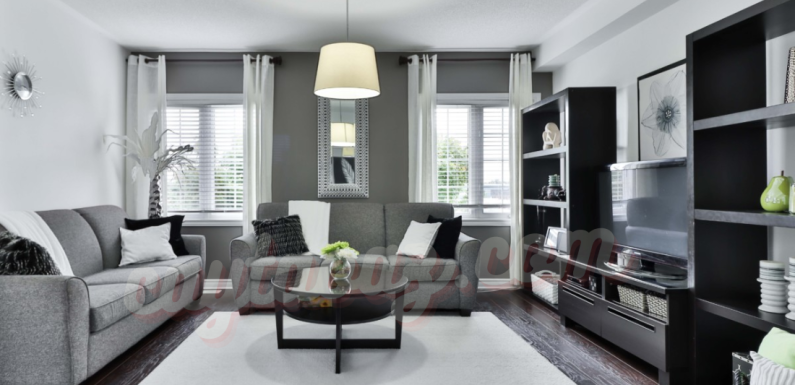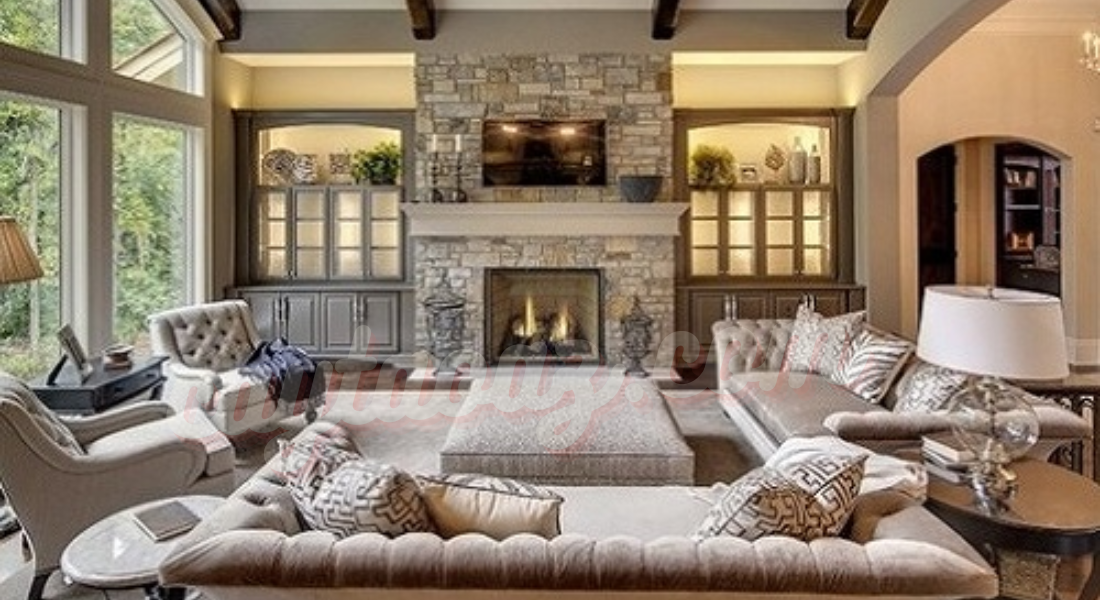
Renovating your living room is an exciting project that can breathe new life into your home. Whether you’re looking to modernize a dated space, create a more functional layout, or simply refresh your decor, a living room renovation has the power to elevate the entire atmosphere of your home. Your living room is often the focal point of family gatherings, entertainment, and relaxation, making it essential to design it in a way that reflects your personal style and meets your functional needs.
In this comprehensive guide, we’ll explore everything you need to know about living room renovation—from initial planning to creative design ideas and cost-saving tips. With the right approach, you can achieve a stunning living room transformation that fits both your aesthetic preferences and your budget.
1. Start with a Clear Vision for Your Living Room Renovation
The first step in any successful living room renovation is to have a clear vision of what you want to achieve. Do you want to create a cozy, traditional space, or are you leaning toward a modern, minimalist design? Before making any decisions about furniture, colors, or layout, it’s important to define the purpose of your renovation. Are you renovating to accommodate more seating, enhance your space for entertaining, or simply refresh the look?
Take some time to browse through interior design magazines, websites, and Pinterest boards for inspiration. Collect images of living rooms that resonate with your style and jot down ideas about color schemes, furniture arrangements, and any must-have features such as a fireplace, entertainment center, or extra storage. A vision board or a digital mood board can help bring your ideas to life and keep you focused throughout the renovation process.
2. Set a Realistic Budget for Your Living Room Renovation
Budgeting is one of the most crucial aspects of any living room renovation. Without a clear budget, it’s easy to overspend or get sidetracked by unnecessary upgrades. Be realistic about how much you’re willing to spend and break it down into categories such as furniture, materials, paint, labor costs, and accessories.
Consider whether you want to hire professionals for certain aspects of the renovation, such as painting or flooring installation, or if you’re willing to take on some DIY projects to save money. Keep in mind that renovations often come with unexpected expenses, so it’s wise to set aside a contingency fund of 10-15% of your total budget for unforeseen costs.
When determining your budget, think about how you can balance high-impact investments with more affordable upgrades. For example, investing in a high-quality sofa or entertainment unit can make a big difference, while opting for budget-friendly accessories and DIY wall art can keep costs down.
3. Choose the Right Color Scheme for Your Living Room
Color plays a crucial role in setting the mood and tone of your living room. Choosing the right color scheme is essential in any living room renovation. If you want to create a calm, relaxing atmosphere, soft, muted colors like shades of gray, blue, or beige are excellent choices. On the other hand, if you’re aiming for a bold and energetic vibe, consider incorporating vibrant hues like deep blue, mustard yellow, or emerald green.
When selecting your color palette, don’t forget to consider the natural light in the room. Lighter colors reflect natural light, making the space feel larger and more airy, while darker tones create a cozy, intimate atmosphere. It’s also important to balance your color choices across walls, furniture, and accessories to ensure the space feels cohesive and harmonious.
For a more dynamic look, consider using an accent wall to introduce a contrasting color or pattern. Accent walls are a great way to add visual interest without overwhelming the entire room. Additionally, incorporating various textures—such as velvet cushions, wooden furniture, or metal light fixtures—can help create depth and dimension in your design.
4. Maximize Space with Smart Furniture Choices
In a living room renovation, furniture plays a central role in both style and functionality. When choosing new furniture, consider pieces that will help you maximize your space, especially if you have a small living room. Opt for furniture that is scaled to fit the size of the room, avoiding oversized sofas or bulky tables that may overwhelm the space.
Modular furniture and sectional sofas are great options for living room renovation projects because they offer flexible configurations and can be rearranged to suit your needs. If you’re renovating for a more open floor plan, consider investing in pieces that can serve multiple purposes. For example, an ottoman that doubles as a coffee table or storage can be both practical and space-saving.
Another smart furniture choice is selecting pieces with elevated legs, which can make a room appear more spacious by creating a sense of openness underneath the furniture. Light-colored upholstery also helps open up the space and creates a fresh, airy vibe.
5. Update Flooring for a Fresh Look
Updating your flooring is one of the most impactful ways to renovate your living room. Whether you’re replacing old carpet, refinishing hardwood floors, or laying down new tile, flooring sets the foundation for your design and can significantly influence the look of the room.
If you have a tight budget, there are plenty of affordable flooring options that still deliver style and durability. Laminate flooring, vinyl plank flooring, and engineered hardwood are great alternatives to more expensive materials like solid hardwood or marble. If you’re looking for a cozy feel, consider adding a large area rug to your living room—rugs come in a variety of styles and sizes and can help define different areas within the room.
If your existing flooring is in good condition but looks worn out, you might be able to revive it with refinishing or a deep clean. For example, a professional cleaning service can bring carpets and upholstery back to life, while refinishing hardwood floors can restore their beauty without the need for replacement.
6. Consider Lighting as Part of Your Living Room Renovation
Good lighting can transform any living room. In fact, lighting is one of the most overlooked aspects of living room renovations, but it can have a profound effect on the ambiance of the space. Start by assessing the natural light sources in the room. Do you have large windows that let in plenty of natural light? Or does the room feel dark and closed off?
To enhance natural light, opt for sheer curtains or blinds that allow sunlight to filter in without sacrificing privacy. If your living room lacks natural light, consider adding extra light sources through layered lighting techniques. Start with ambient lighting, such as overhead fixtures or recessed lights, then add task lighting (like reading lamps) and accent lighting (like table lamps or wall sconces) to create depth and visual interest.
Consider incorporating smart lighting into your living room renovation. With smart bulbs, you can adjust the lighting intensity and even change the color to match your mood or activities. This adds both convenience and a touch of modern luxury to your space.
7. Add Personal Touches with Artwork and Accessories
A living room renovation isn’t complete without the finishing touches that reflect your personality and style. Artwork, decorative accents, and personal items can infuse the room with character and warmth. Whether it’s a gallery wall of framed prints, vintage sculptures, or a collection of your favorite books, accessories bring individuality to your living room.
When adding artwork or decorative pieces, ensure they complement the color scheme and overall style of your renovation. Choose pieces that resonate with you and tell a story about your tastes and interests. This might include abstract art for a contemporary look, nature-inspired prints for a more organic feel, or even family photographs in unique frames.
Don’t forget about textiles like throw pillows, blankets, and curtains. These accessories can be easily swapped out when you want to update the space or add seasonal flair. Adding texture with soft, luxurious fabrics can also enhance the overall ambiance of the room, making it feel more inviting and comfortable.
8. Focus on Storage Solutions for a Clutter-Free Living Room
During your living room renovation, it’s essential to consider storage solutions that keep the space organized and functional. An overcrowded living room can feel chaotic and uncomfortable, so look for ways to incorporate hidden storage to keep things tidy.
Opt for furniture pieces that offer built-in storage, such as a coffee table with drawers, a storage ottoman, or a TV stand with ample compartments. Wall-mounted shelves and floating cabinets are also great options for creating extra storage without taking up valuable floor space. If your renovation includes an open-plan design, consider using room dividers or bookcases to create distinct zones while also providing storage.
If you have limited space, vertical storage is a smart choice. Use tall bookcases or cabinets to maximize the vertical space in the room, or install floating shelves above the seating area to store books, plants, or decorative objects.
9. DIY Projects for a Personal Touch
If you’re on a budget and looking to add a personal touch to your living room renovation, consider taking on a few DIY projects. Small changes like painting your own artwork, creating custom shelves, or repurposing old furniture can be a cost-effective way to update your space without the need for expensive purchases. DIY projects also allow you to infuse your own style and creativity into the renovation process.
Popular DIY ideas for living room renovations include creating a feature wall with peel-and-stick wallpaper, repurposing old furniture with a fresh coat of paint, or even building your own coffee table from reclaimed wood. These small projects can make a big difference in the overall feel of the room.
Conclusion
A living room renovation can be an incredibly rewarding experience that breathes new life into your home. Whether you’re updating the furniture, rethinking the layout, or enhancing the design with thoughtful color schemes and accessories, every detail counts. With a clear vision, a reasonable budget, and a focus on functionality, you can create a living room that is both stylish and practical, enhancing your enjoyment of the space for years to come.
By following the tips outlined in this guide, you’ll be well on your way to a successful living room renovation. From maximizing space with smart furniture choices to adding personal touches with accessories and DIY projects, there’s no shortage of ways to make your living room renovation a success. Let your creativity flow, stay within your budget, and soon you’ll have a transformed living room that you’ll love to spend time in.

